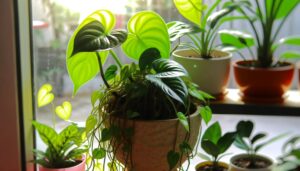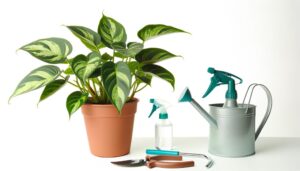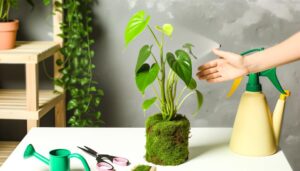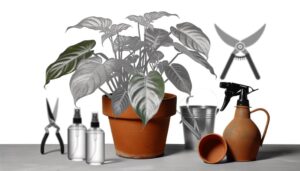How Do I Care for a Heartleaf Philodendron Plant? Guide!
The Heartleaf Philodendron (Philodendron hederaceum) thrives in moderate to bright indirect sunlight, ideally near a north or east-facing window, with temperatures between 70°F and 85°F. Maintain soil moisture by watering every 1-2 weeks, ensuring the top inch of soil is dry beforehand.
Use a balanced, houseplant fertilizer monthly during the growing season. Regular pruning during spring or early summer promotes bushier growth.
Repotting should be done every 2-3 years. By continuing, you’ll acquire more significant insights into caring for this beautiful plant.
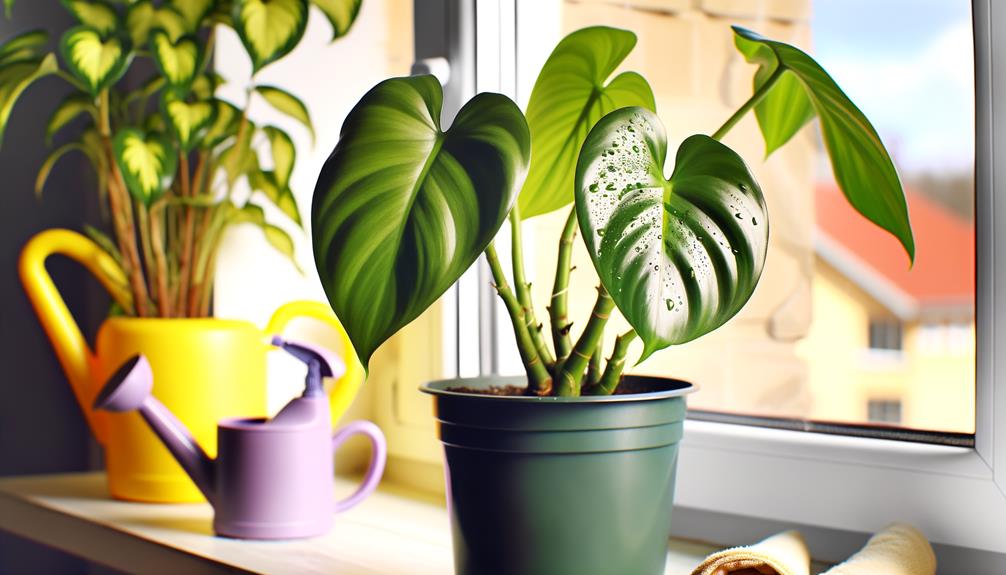
Key Takeaways
- Place the Heartleaf Philodendron near a north or east-facing window for moderate to bright, indirect sunlight.
- Water the plant every 1-2 weeks, ensuring the top inch of soil is dry before watering to prevent root rot.
- Use a well-draining soil with peat moss or perlite and apply a balanced houseplant fertilizer once per month during the growing season.
- Prune the plant in spring or early summer to encourage bushier growth and maintain its shape.
- Repot the plant every 2-3 years or when the roots become crowded, choosing a pot 2 inches larger in diameter.
Understanding Heartleaf Philodendron Basics
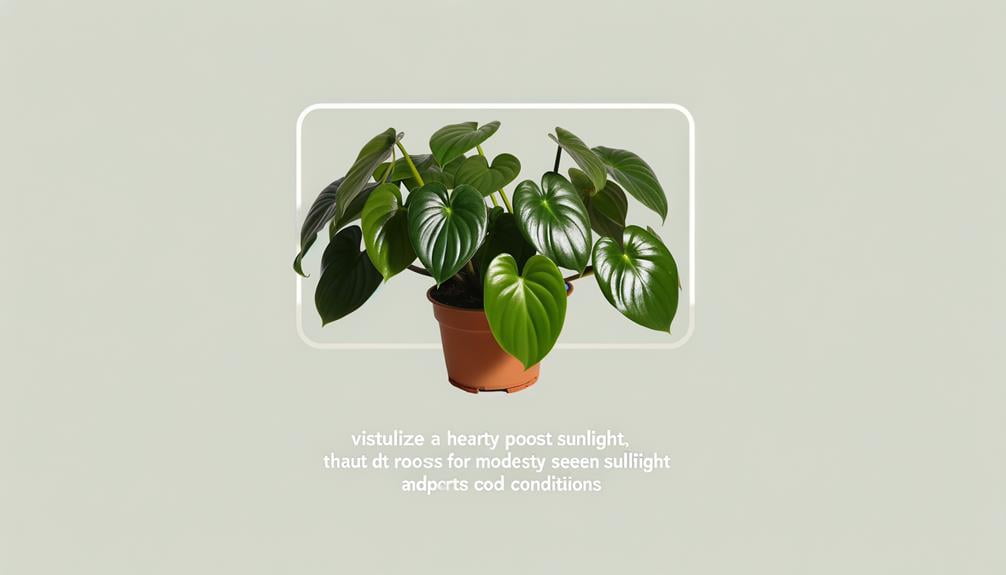
Characterized by its lush, trailing vines and heart-shaped leaves, the Heartleaf Philodendron, scientifically known as Philodendron hederaceum, is a versatile and low-maintenance houseplant that thrives under a variety of indoor conditions.
Native to Central America and the Caribbean, this species is part of the Araceae family. Its evergreen foliage brings a touch of nature indoors, enhancing the aesthetics of any room.
It grows best in well-draining soil and requires moderate watering. Overwatering can lead to root rot, a common issue for these plants.
The Heartleaf Philodendron is also a pet-friendly plant as it doesn’t hold any toxic components. Understanding these basics about the Heartleaf Philodendron enables us to provide effective care, ensuring its healthy growth and longevity.
Ideal Sunlight and Temperature Conditions
Having established a foundational understanding of the Heartleaf Philodendron, let’s now examine the best sunlight and temperature conditions for this verdant houseplant.
A Heartleaf Philodendron thrives in moderate to bright, indirect sunlight. Direct sunlight, especially in the afternoon, can scorch its leaves. Consequently, it’s best placed near a north or east-facing window.
As for temperature, this tropical plant prefers a warm climate, ideally between 70°F and 85°F. It can tolerate a minimum of 60°F, but prolonged exposure to colder temperatures will adversely affect its growth. Be extra vigilant during winter to avoid cold drafts.
With the right balance of sunlight and temperature, your Heartleaf Philodendron can flourish, serving as a lively addition to your indoor space.
Watering Your Heartleaf Philodendron
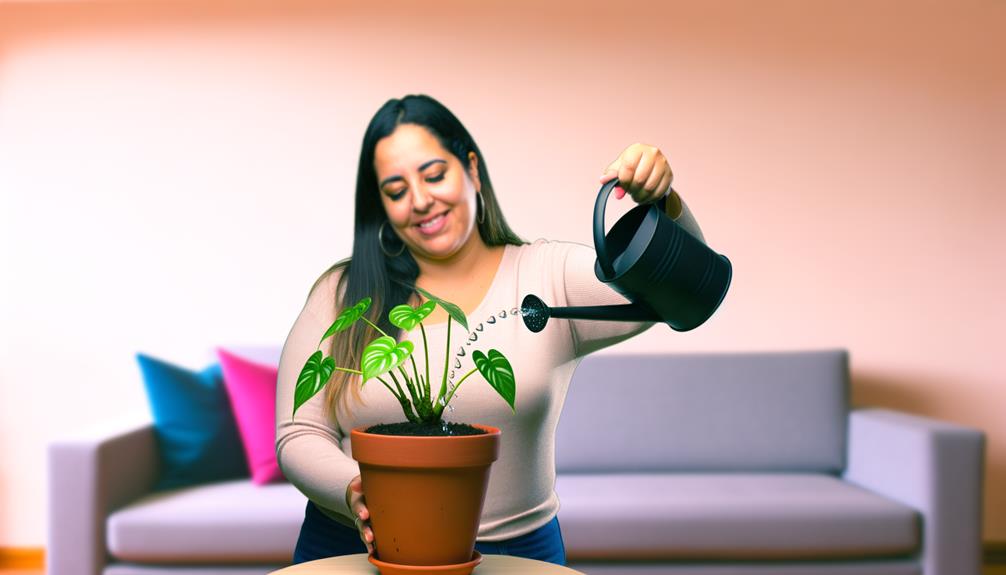
Shifting our focus to hydration requirements, it’s important to mention that the Heartleaf Philodendron prefers a well-drained, consistently moist soil environment, indicative of its tropical origins. This plant does not tolerate drought well, so the watering schedule should be carefully maintained.
To ensure best hydration, consider the following steps:
- Watering Frequency: Water your Heartleaf Philodendron every 1-2 weeks, depending on the humidity and temperature conditions.
- Moisture Level: Confirm the top inch of the soil is dry before watering again. Overwatering can lead to root rot, a significant threat to the plant’s health.
- Water Quality: Use lukewarm, filtered water if possible. Cold tap water may shock the plant while high mineral content can cause leaf discoloration.
Choosing the Right Soil and Fertilizer
The selection of appropriate soil and the careful use of fertilizer play an essential role in the thriving growth of a Heartleaf Philodendron.
This plant prefers a well-draining soil, with peat moss or perlite as an excellent choice to improve drainage and aeration. A general-purpose indoor potting mix can also be used.
When it comes to fertilization, a balanced houseplant fertilizer (20-20-20) is recommended. Apply once per month during the growing season, typically from spring to fall. Over-fertilization can lead to leaf burn, so it’s important to follow the product’s instructions.
During the winter months, the plant enters a dormant phase, and fertilization can be reduced or stopped. Always remember, a healthy plant starts with good soil and proper nourishment.
Pruning and Repotting Tips
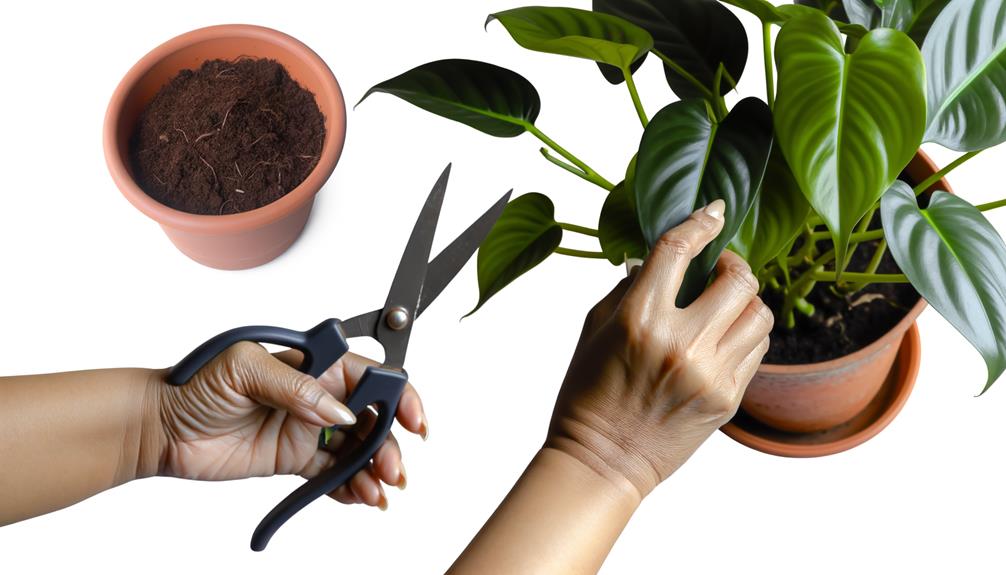
While proper soil and fertilization are essential for the health of a Heartleaf Philodendron, regular pruning and timely repotting are also integral to maintaining its vibrant growth and aesthetic appeal.
Pruning: This encourages bushier growth and allows you to control the plant’s shape. Prune in spring or early summer when the plant is in its active growth phase. Use sharp, sterilized pruning shears to prevent disease transmission.
Repotting: Heartleaf Philodendrons should be repotted every 2-3 years or when the roots become crowded. Choose a pot 2 inches larger in diameter than the current one and use well-draining soil.
Root Care: When repotting, gently untangle any root-bound areas. This encourages healthier root growth and better nutrient absorption, leading to a more flourishing plant.
Heartleaf Philodendron Money Plant
The Heartleaf Philodendron (Philodendron hederaceum) and the Money Plant (Epipremnum aureum, also known as Pothos) are two different popular houseplants often confused due to their similar appearance and easy care requirements.
Heartleaf Philodendron
- Scientific Name: Philodendron hederaceum
- Appearance: Heart-shaped, dark green leaves with a smooth texture.
- Light: Thrives in bright, indirect light but can tolerate lower light conditions.
- Water: Keep soil consistently moist but not waterlogged; allow the top inch of soil to dry out between waterings.
- Growth Habit: Vining plant, can be grown in hanging baskets or trained to climb.
Money Plant (Pothos)
- Scientific Name: Epipremnum aureum
- Appearance: Heart-shaped leaves, often variegated with white, yellow, or light green.
- Light: Prefers bright, indirect light but can adapt to low light.
- Water: Allow the top inch of soil to dry out between waterings; more drought-tolerant than the Heartleaf Philodendron.
- Growth Habit: Vining plant, suitable for hanging baskets or as a climbing plant.
Both plants are excellent for indoor spaces, known for their air-purifying qualities and low maintenance requirements.
Conclusion
To achieve the best care for a heartleaf philodendron involves understanding its basic needs, providing appropriate sunlight and temperature conditions, regular watering, choosing the right soil and fertilizer, and applying correct pruning and repotting techniques.
When these factors are properly managed, the heartleaf philodendron will grow healthily and beautifully.
The plant’s upkeep is quite manageable, making it an ideal choice for both novice and experienced plant owners who wish to have a touch of greenery in their homes.

